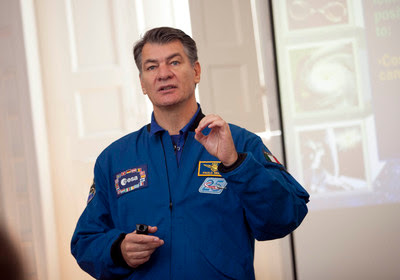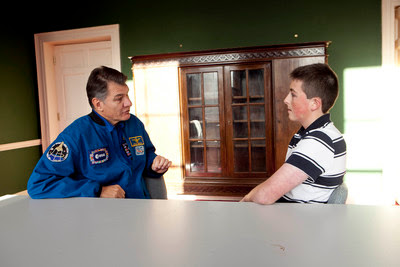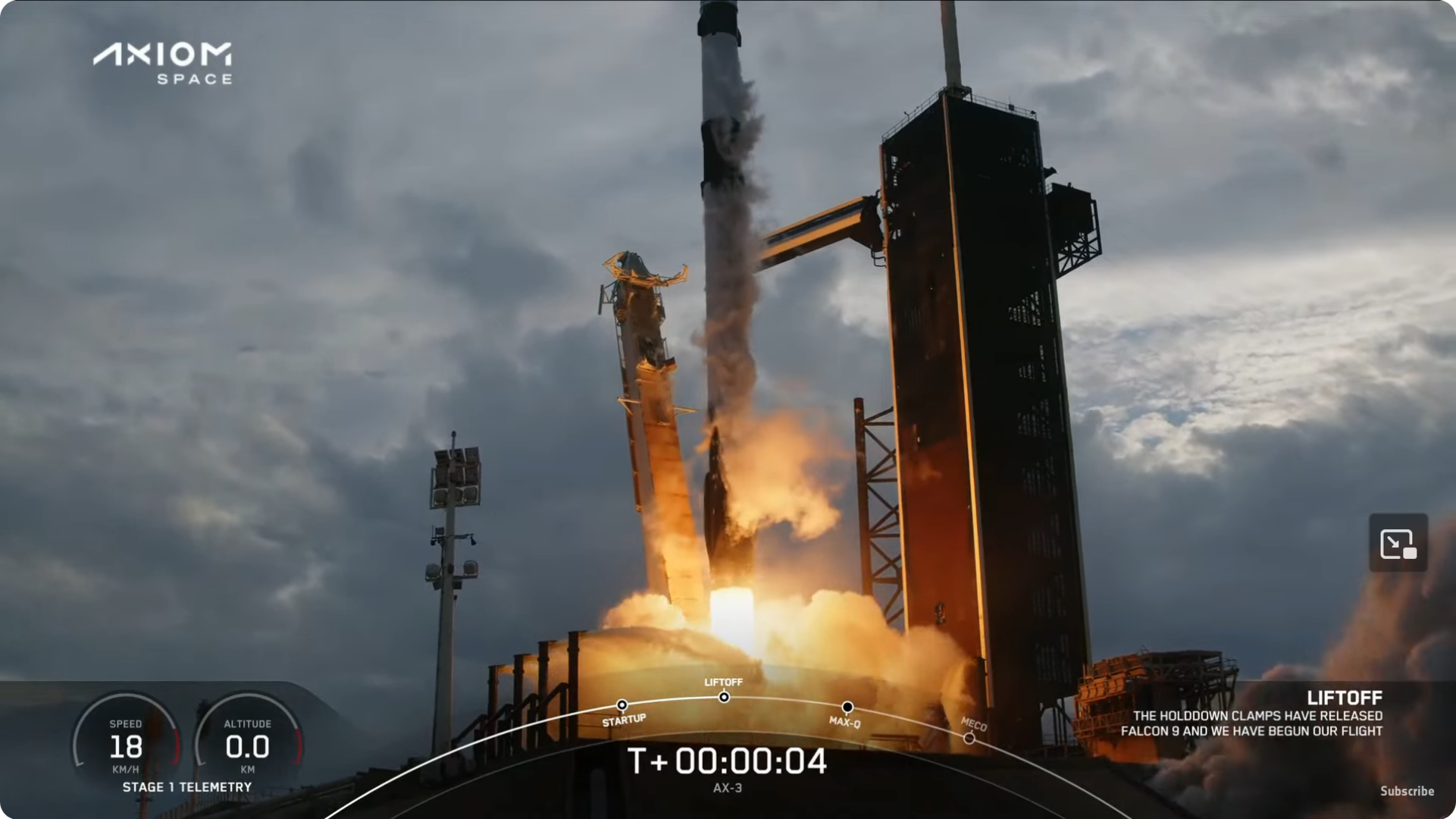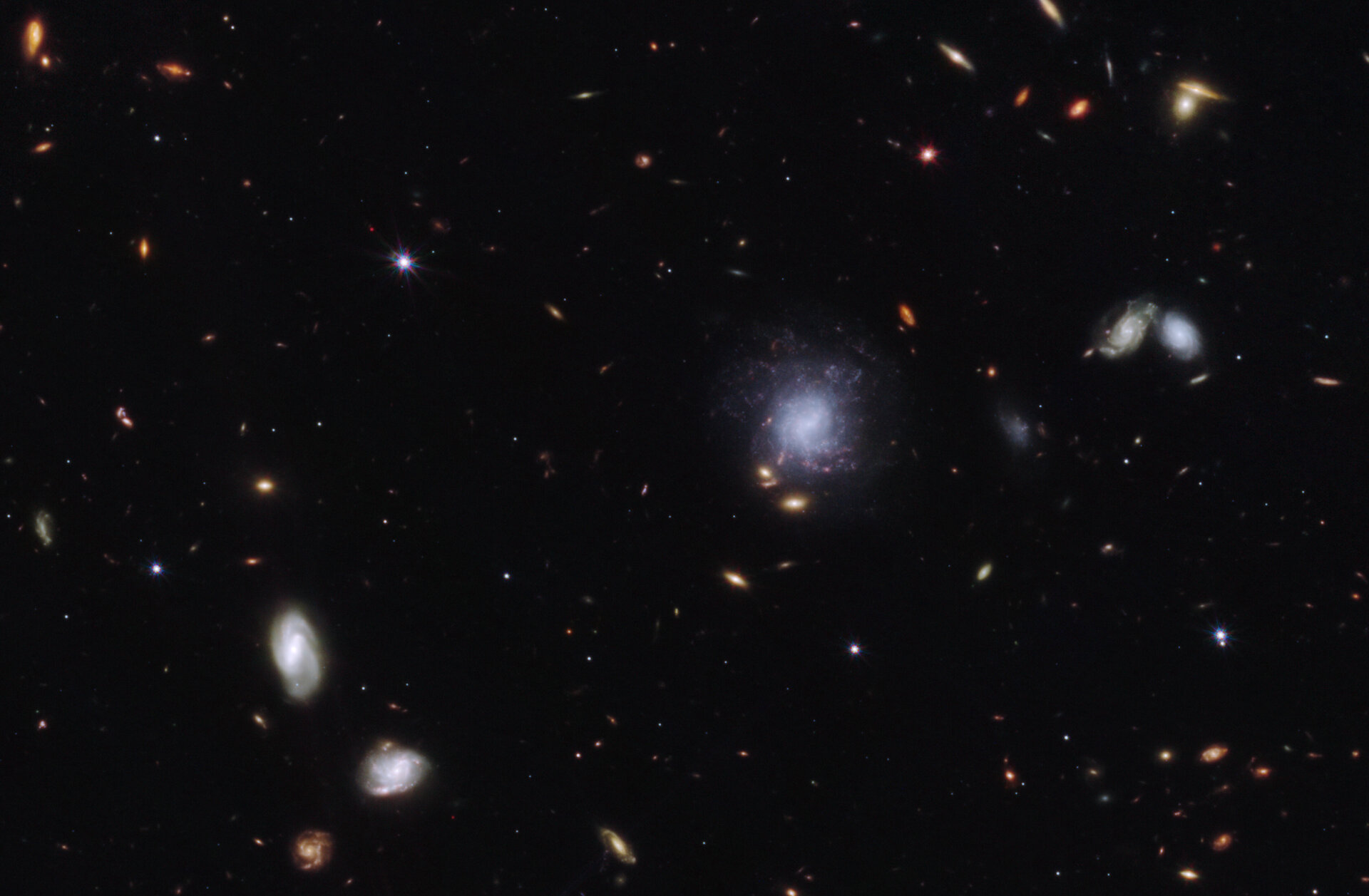July 28 2017, European Space Agency astronaut Paolo Nespoli alongside
Soyuz MS-05 crew mates Sergey Ryazanskiy and Randy Bresnik will launch
on a five-month mission to the International Space Station as part of
Expedition 52/53. Five
years ago I was lucky enough to interview Nespoli
following a talk he gave in Dublin’s Little Museum celebrating Science
Week 2012.
What were your favourite subjects in school?
Well I liked the science things such as math and physics. But I mean I
wasn’t an exceptional student, I was just a regular guy. I think one of
the problems was that school at that time was not really interested in
adapting to the student. It had a programme that was not challenging for
me, so I didn’t really care. I remember I did really poor in Latin. So
the bottom line really is that science was my preferred subject, but
it’s not like I was excelling.
| Science Week 2012 interview with Paolo Nespoli at Dublin’s Little Museum |
So then you took these interests and you ended up
studying aeronautical engineering in New York. At what point then did
you decide that you wanted to become an astronaut?
idea of becoming an astronaut came when I was around 10, and I saw
American astronauts jumping on the Moon. I think I was 12 or something
like that. And then when I saw this guy called John Young jumping on the
moon I just thought “Wow!” I want to become an astronaut.” But at the
time it was just an idea.
Later on when I decided to go
back to university, I decided to become an engineer not because I
wanted to be an astronaut, but because I liked engineering, so there is a
false assumption that you need to figure out what field you need to
take in order to become an astronaut – it does not work that way. I
caution people all the time – you need to find your passion, and if that
passion is in a technical field, then you need to find which technical
field. It could be mathematics, physics, engineering, it could be
medicine, it could be oceanography. It could be anything. But you don’t
do a technical degree just so you can become an astronaut, because there
is a very good chance that you won’t be an astronaut. So you better
find a field that you like, pursue it, hope that everything goes okay,
and then you will become an astronaut. But you need to have a profession
that you can do with pleasure, with passion.
“I saw this guy called John Young jumping on the moon and I just thought “Wow!” I want to become an astronaut!”
So
then after years of training, in 2007 you are about to make your first
launch on STS-120. What were the main emotions that you felt on launch
day, as you were getting ready to make your first flight?
you know, the launch itself is a bit of an anti-climax I think. Meaning
that you have waited for that for a good part of your life, and finally
you are there. And I think what I felt was a huge sense of being
relieved. Finally I am here. Finally today is the day in which we
launch. The day that I am no longer in a simulator, or doing a sport in
which I could injure myself and break a leg and then you don’t launch
anymore. It’s the day that the rocket is working. I mean there are a few
chances that they might delay it, but you know, it’s a day in which
everything gets put together and it’s a very happy day.
I
felt a good sense of accomplishment that I was able to get there. But I
was really concentrated on what I needed to do to do my part in this
launch. I wanted to make sure that I am not the cause for a delay or
even putting myself or somebody else’s life in danger, so I was very
much concentrated on my tasks. That took most of my brain power.
 |
| Nespoli speaking at Dublin’s Little Museum for Science Week 2012. |
Three
years later you launched on the Soyuz Spacecraft as part of Expedition
26/27. What are the main differences between launching on the Soyuz and
launching on the shuttle?
the Soyuz is like driving a Ferrari in a circuit. I mean it’s an
extremely capable vehicle because it’s extremely fast, and it performs
very well. At the same time it’s very delicate. Anything can influence
the launch sequence, the rocket itself, and the crew.
While
the Soyuz is a very small piece of equipment, it’s still very reliable,
and when the Russians say you will launch on the 15th of December at
one o’clock at night – you will launch on the 15th of December at one
o’clock at night!
If you have flown on the shuttle, you
kind of look at it with skepticism. You then rethink this when you
train, because you see how reliable it is. How ingenious it is able to
do these complex tasks with little equipment and little complexity. So
there’s a lot of things to be said about that. I think we can learn from
both the philosophies of the shuttle and the Soyuz because we really
need to build a capable vehicle that will bring us to the Moon and Mars
and continue exploration. We need to make it perform and we also need
to understand that complicating things is not really efficient and does
not work.
So
then when you arrived at the space station after your two day catch up,
what were the main thing that you wanted to achieve during your 6
months on station?
goal was to be a good crew member. This means working effectively with
Mission Control, the other crew members, to do my best, get all he
scientific results from all the experiments we performed, and most of
all making the space station work effectively. So I wanted to do a good
mission. Nothing exceptional but a decent and good mission, and it
turned out that this is exactly what I did.
It was nice
being up there you know, I really enjoyed it, and I felt that after the
initial period of adapting to life in space; which was really hard
work, I felt I was able to contribute effectively to what was going on. I
worked really well with Mission Control, I worked really well with my
crew members. I made myself available any time I could, to go above and
beyond what was the call of duty. I made myself available to work on
weekends because I felt it’s such an exceptional place to be, and I
really need to take advantage of all the things that are there.
You orbited the Earth once every 90 minutes. What was the best thing you have seen from space?
 |
| Paolo Nespoli training at Star City, Russia. credit: ESA |
Difficult to say. It’s difficult to say because I
started the mission looking out of the Cupola (360 degree field of view
window on the ISS). By the way it’s not so easy to look down because of
things like time. If you have a few minutes in the Cupola, most of the
time you see oceans and clouds. I mean there are a LOT of clouds! I
would say that more than 50% of the planet is covered by clouds. And it
also very difficult to make out where you are. However this is only at
the beginning. Then there is a magic moment about one third into the
mission where suddenly, you understand where you are. You peek out of
the window and now you know what continent you are flying over, what
nation you are looking at, what river, what sea it is. Then you start
picking out things- special places, mines, cities. It becomes really
really interesting. Then I thought I’m going to take a picture of 2 or 3
exceptional places that I really want to go and see once I go back to
Earth.
I wanted to go back and see those places, and
then I started taking pictures. Sure enough, instead of ending up with 2
or 3, I ended up with three hundred and something, which obviously is
impossible because I don’t have either the money or the time to visit
all those places. So really it is difficult to say which is the best,
because from up there, everything looks so astonishing. I mean frozen
lands from up there look pretty inhospitable, but from space they look
wonderful. Just so interesting.
When
Expedition 27 was coming to an end, what were your feelings as you
prepared to leave the ISS, your home for the last 6 months?
you know, six months pass fairly quickly, which is astonishing, but
this is what happens. And six months pass even quicker because we had so
many visiting vehicles- 2 shuttles and things like that, so we were
always busy busy busy. But it turns out that the last shuttle was
delayed, and it came at exactly the moment in which we needed to leave
which caused an operational problem. They actually delayed our return by
a week, and they were thinking of delaying it even more. We even asked
to be delayed even more because we wanted to stay up there. Then it
turned out that this was not possible. But I would have to say in my
opinion the strongest emotion was that I was glad that the six months
had passed in a pretty good way.
I
felt I worked effectively with Mission Control and the other crew
members. We got a lot of data, we really worked well in orbit, nothing
major happened, so I had a good sense of accomplishment which was pretty
good. I have to say however that I was not ready to go home really,
because I had other things to do, but you know, time passes and things
need to be done. And I have to say that in a certain way when I was
going home that it was a good mission. I mean it doesn’t take much to
turn a good mission into a disaster, so in a certain way I was happy to
be where I was. I did not cry when I left the station, well.. maybe I
cried but it was more emotional I think. I did not live with
displeasure, I mean, I was very neutral. I was coming back but I was
neither happy nor sad. I think I came back exactly the time I needed to
come back.
In
the last couple of weeks, it has been announced that there will be a
year long mission to the ISS. Do you feel that now is the right time to
carry out a mission like this?
 |
| The Soyuz MS-05 crew ready for launch credit: Roscosmos |
I feel we need to know more about what happens to the
body and what happens to the mind when you stay in space for a long
time. There was a Russian cosmonaut who stayed in space for well over a
year, so the Russians have done this in a more restricted and confined
environment (Mir Space Station) than what is today space station, where
we have internet, telephone, teleconference capabilities so we can talk
to Mission Control whenever we want. So I feel we need to understand
more about longer duration missions if we want to go to Mars and
continue exploration.
I think it’s a good time for
NASA, and the community to tackle a one year mission. I personally would
like to go on a one year mission. I know many US astronauts who
volunteer for that, so NASA really had problems to select an astronaut,
but basically yeah, I think that now is a good time, and I think we
should do it.
Do
you feel that in order to achieve the goal of landing on Mars, all
space faring nations like the US, Europe, Russia, China and India all
need to work together in order to achieve this goal?
you know, there are technical considerations, and there are political
considerations. I’m not sure I can do political considerations because
this is not my field. But obviously, in my opinion, the most problematic
point of going to Mars is to find secure political support. It’s not a
technological problem, it’s not a capability problem, it’s more support.
Going to Mars costs a lot, and we need good political will, and I feel
that now, we do not have such a political will.
I think
that going to Mars will be better done if completed on an international
point of view. A mission to Mars by the human race. Instead of just by
Italy, United States, Russia or China or whatever. I think it would be
better if we went as humanity, but I am not sure if this would work. It
might be that the Chinese decide that it is an important strategical
goal for their nation to go to Mars, and they will decide to go. For
sure it’s easy if one nation decides. It’s more difficult if a
consortium of nations is in charge of this task. I don’t know! I feel it
would be much better for humanity if we went as human beings, as united
nations or something like that. But as you know it’s not so simple!
To
celebrate Paolo’s return to the ISS, Blackrock Castle Observatory are
offering free admission from 16:30 – 17:00. For more information, please
click here.
Live coverage of the Soyuz MS-05 launch, rendezvous and docking to the International Space Station will be available on NASA TV.
Thank you for reading Irish Space Blog!




